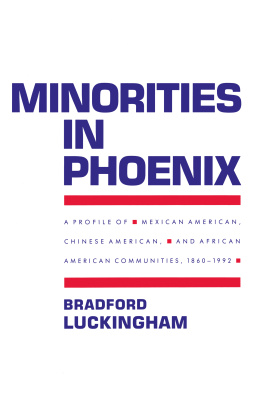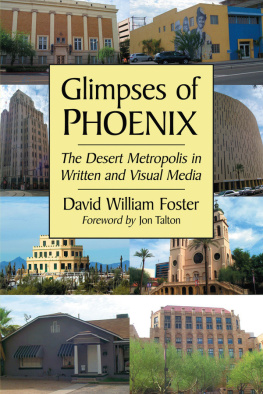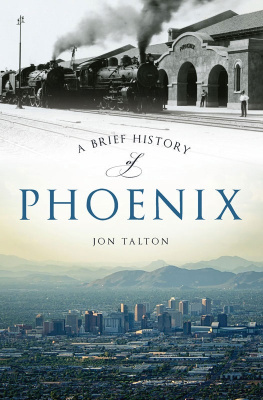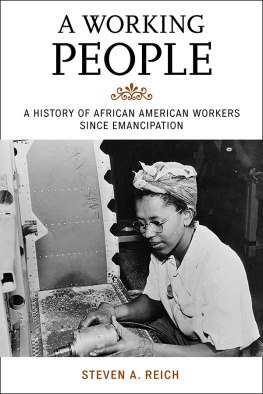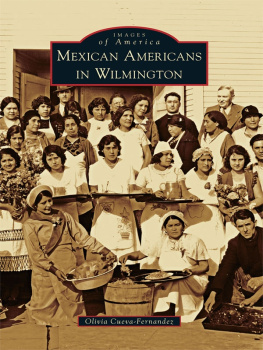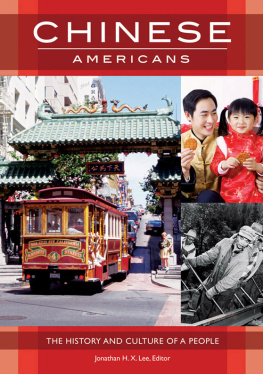PREFACE
In recent years historians have revealed much about minority group members as integralparts of vital communities rather than picturing them only as passive victims ofAnglo American oppression. This inclusion represents a new and deserving emphasis,one that shows minority group members as playing active roles in American history,attempting and often succeeding in shaping their own destiny despite the barriersof prejudice, discrimination, and exploitation. The new emphasis has been a positivedevelopment in historical writing, but the formidable barriers of prejudice, discrimination,and exploitation that have existed continue to need attention from historians.
Life for minority groups in Phoenix has historically been difficult but promising.Over time, the struggle for equity resulted in gains being made, but progress wasnever easy. Unfortunately, little attention has been given to the historical experienceof Mexican Americans, Chinese Americans, and African Americans in the nation's ninthlargest city, but past neglect is giving way to new awareness. This book is a beginning,covering the experience of three important minority communities in Phoenix from theirorigins in the late nineteenth century to the present. It profiles the general historyof each group, emphasizing the problems as well as the progress the group experienced.A variety of sources, ranging from newspaper files to statistical data to oral accounts,has been utilized in an attempt to provide both an internal and external view ofthe groups involved. Also, an attempt has been made to compare the Phoenix experiencewith that of other cities in the region and the nation.
I wish to thank all the historians, librarians, and students who have helped me inmy work. Special appreciation is due several institutions and the able people whostaff them: the Arizona Historical Society, the Arizona State Department of LibraryArchives and Public Records, the Phoenix Museum of History, the Salt River ProjectArchives, and the Hayden Library, Arizona State University. The Arizona Collectionand the Arizona Historical Foundation, both located in the Hayden Library, provedindispensable.
I also want to thank all those involved in the Phoenix Chinatown project for theirsupportandcooperation. Portions of first appeared in First Street and Madison:HistoricalArchaeologyof the Second Phoenix Chinatown, a report prepared for theCityof Phoenix,Pueblo Grande Museum, by Dames and Moore Intermountain CulturalResourceServices,Phoenix, Arizona, 1992.
I am also deeply indebted to Edward Oetting, Chris Marin, Susie Sato, Evelyn Cooper,Cindy Myers, Melanie Sturgeon, Dennis Preisler, Larry Guillow, Jay Antle, Pat Moore,Michael Lawson, Carolyn Sol, Michael Konig, Michael Kotlanger, S.J. and the lateGeoffrey Mawn. I also wish to acknowledge the support of the Arizona State UniversityHistory Department, the Arizona State University College of Liberal Arts and Sciences,and the Arizona State University Faculty Research Grants Program. To James Dybdahl,Senior Word Processor, Humanities Computing Facility, I am also indebted.
Finally, I wish to thank my wife, Barbara, for her aid and encouragement.
Brad Luckingham
INTRODUCTION ALWAYS THE STRUGGLE
In 1990, Phoenix ranked as the ninth largest city in the United States. Historically,thepopulationof the Arizona capital has been largely Anglo, with small groupsofpeopleof color making up the difference. In the early years of the city's history,Mexicansaccountedfor half the population, but they quickly lost ground to Anglos,whoprogressivelyoutnumbered them. During most of the twentieth century, Mexicansremainedthelargest minority group in Phoenix, making up about 15 percent of thetotalpopulation;blacks continued to make up about 5 percent; and Chinese, about1percent.In recent years each group has experienced a surge in numbers, gaininginrepresentationbut remaining small within the total population (see
The struggle has not been unique to Phoenix. Although the experience differed fromregion to region, from city to city, it always involved struggle. Historians rightlypoint out that the struggle has been heroic as well as tragic. Variations in thelevel of racism and responses to it over time and place are evident. All types ofconditions existed: Mexican Americans seemed better off in Tucson than in Phoenix;Chinese Americans seemed worse off in Los Angeles than in Phoenix; African Americansseemed better off in Seattle than in Phoenix; and so on. The responses to racismby various groups also differed. Minority group populations varied in size and minoritygroup problems varied in intensity from city to city, but they did exist, and minoritygroup leaders and members acted in positive ways rather than as passive victims ofnegative racial attitudes and actions. They created viable communities and they workeddiligently to shape their own lives despite the barriers of prejudice and exploitation.They actively fought segregation, discrimination, and oppression at whatever levelthey existed. Over time, the struggle for equity bore fruit and many succeeded inachieving their goals. Struggle proved integral to the total experience of minoritygroup members in the urban West; for many of them, the struggle goes on.
Table 1.1 Phoenix Population Statistics, 18701990
| Year | Total | Mexican Americans | Chinese Americans | African Americans |
| 1870 | 240 | 124 | 3 |
| 1880 | 1,708 | 772 | 110 | 5 |
| 1890 | 3,152 |
| 1900 | 5,544 | 802 | 91 | 150 |
| 1910 | 11,134 | 1,100 | 110 | 328 |
| 1920 | 29,053 | 2,323 | 130 | 1,075 |
| 1930 | 48,118 | 7,293 | 227 | 2,366 |
| 1940 | 65,414 | 9,740 | 431 | 4,263 |
| 1950 | 106,818 | 16,000 | 448 | 5,217 |
| 1960 | 439,170 | 61,460 | 1,092 | 20,919 |
| 1970 | 584,303 | 81,239 | 1,483 | 27,896 |
| 1980 | 789,704 | 116,875 | 2,493 | 37,672 |
| 1990 | 983,403 | 176,139 | 4,254 | 51,053 |
SOURCE: U.S. Census of Population, 1870-1990.
From the beginning, the struggle existed. During the Spanish and Mexican periods,Anglo Americans began to enter the towns of present-day Texas, New Mexico, Arizona,and California. During and after the Mexican War of conquest, Anglos increasinglyfound their way to the towns, fast becoming the urban centers of the American Southwest.They joined local Mexicans in the further development of Santa Fe, Albuquerque,Tucson, Los Angeles, San Diego, and other communities. With the coming of the railroads,the relationship between the two groups deteriorated. More Anglos than Mexicansarrived and Anglo population gains increased. As the oasis towns developed duringthe late nineteenth cen tury, they became more attractive to Anglo elements, andas Anglos assumed power in the regional centers of the Southwest, they utilizedthe Mexican population to help them realize their goals, including economic growth,political control, and social and cultural prominence. Having achieved a dominantposition in each community, the Anglos acquired more wealth, influence, and prestige,and from these positions of strength dictated the terms of the ethnic arrangement,which invariably found the majority of Mexicans and Mexican Americans living on the"wrong side of the tracks." For them, upward mobility proved elusive and povertyremained a problem. Although their situation was bleak north of the border, Mexicanskept coming because it usually meant economic improvement over what was availablein Mexico; indeed, during the years 1900 to 1930the migration eramore than a millionMexicans moved into the American West, many of them to the emerging cities.

